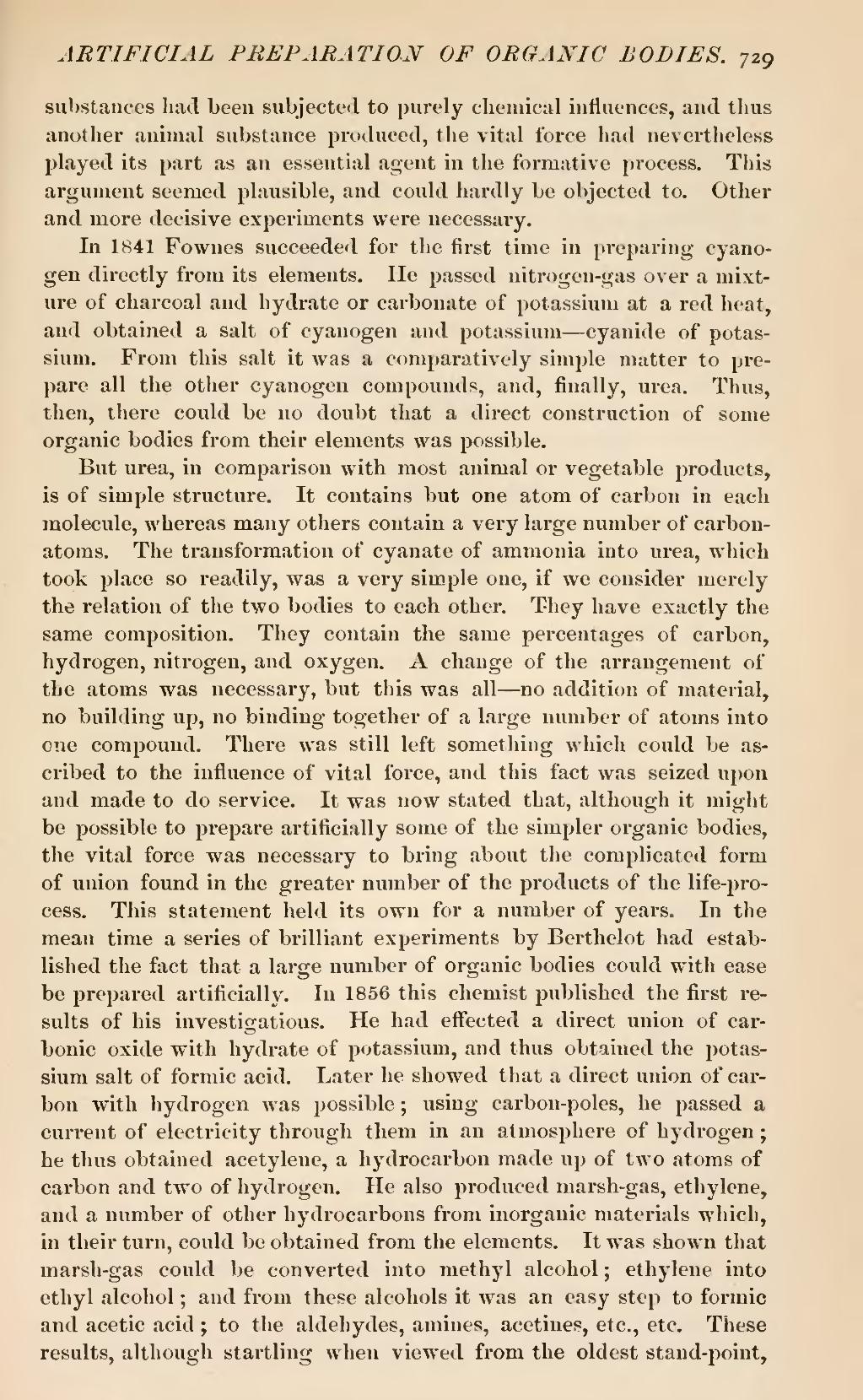substances had been subjected to purely chemical influences, and thus another animal substance produced, the vital force had nevertheless played its part as an essential agent in the formative process. This argument seemed plausible, and could hardly be objected to. Other and more decisive experiments were necessary.
In 1841 Fownes succeeded for the first time in preparing cyanogen directly from its elements. He passed nitrogen-gas over a mixture of charcoal and hydrate or carbonate of potassium at a red heat, and obtained a salt of cyanogen and potassium—cyanide of potassium. From this salt it was a comparatively simple matter to prepare all the other cyanogen compounds, and, finally, urea. Thus, then, there could be no doubt that a direct construction of some organic bodies from their elements was possible.
But urea, in comparison with most animal or vegetable products, is of simple structure. It contains but one atom of carbon in each molecule, whereas many others contain a very large number of carbon-atoms. The transformation of cyanate of ammonia into urea, which took place so readily, was a very simple one, if we consider merely the relation of the two bodies to each other. They have exactly the same composition. They contain the same percentages of carbon, hydrogen, nitrogen, and oxygen. A change of the arrangement of the atoms was necessary, but this was all—no addition of material, no building up, no binding together of a large number of atoms into one compound. There was still left something which could be ascribed to the influence of vital force, and this fact was seized upon and made to do service. It was now stated that, although it might be possible to prepare artificially some of the simpler organic bodies, the vital force was necessary to bring about the complicated form of union found in the greater number of the products of the life-process. This statement held its own for a number of years. In the mean time a series of brilliant experiments by Berthelot had established the fact that a large number of organic bodies could with ease be prepared artificially. In 1856 this chemist published the first results of his investigations. He had effected a direct union of carbonic oxide with hydrate of potassium, and thus obtained the potassium salt of formic acid. Later he showed that a direct union of carbon with hydrogen was possible; using carbon-poles, he passed a current of electricity through them in an atmosphere of hydrogen; he thus obtained acetylene, a hydrocarbon made up of two atoms of carbon and two of hydrogen. He also produced marsh-gas, ethylene, and a number of other hydrocarbons from inorganic materials which, in their turn, could be obtained from the elements. It was shown that marsh-gas could be converted into methyl alcohol; ethylene into ethyl alcohol; and from these alcohols it was an easy step to formic and acetic acid; to the aldehydes, amines, acetines, etc., etc. These results, although startling when viewed from the oldest stand-point.
